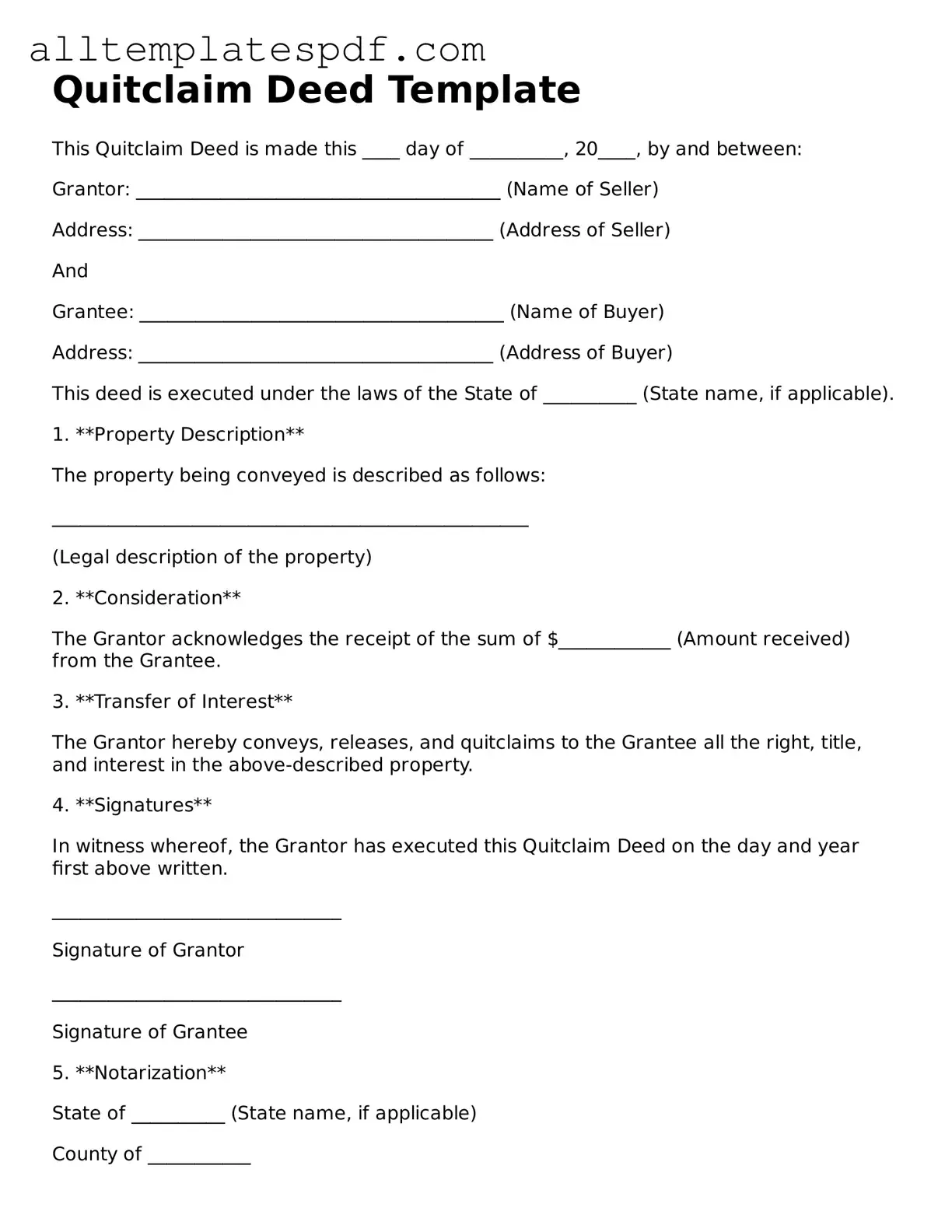When individuals decide to transfer property ownership, they often choose to use a Quitclaim Deed. This document is relatively straightforward, but mistakes can easily occur. Understanding common pitfalls can help ensure a smooth transfer process.
One frequent error is failing to include the full legal description of the property. While it may seem sufficient to simply provide the address, a legal description is necessary to clearly identify the property being transferred. Omitting this crucial detail can lead to confusion and disputes in the future.
Another common mistake involves incorrect names. It is essential to ensure that the names of both the grantor (the person transferring the property) and the grantee (the person receiving the property) are spelled correctly and match the names on their respective identification documents. Any discrepancies can render the deed ineffective.
Many individuals overlook the need for notarization. A Quitclaim Deed must typically be signed in the presence of a notary public to be legally valid. Failing to have the document notarized can lead to complications, particularly when the deed is challenged later on.
Some people mistakenly believe that a Quitclaim Deed does not require witnesses. In many jurisdictions, having one or two witnesses sign the document is necessary for it to be legally binding. Neglecting this step may invalidate the deed.
Another frequent oversight is not including the date of the transaction. While it may seem minor, the date provides a timeline for the transfer and can be critical in establishing ownership rights. Leaving this blank can create ambiguity.
In addition, individuals sometimes forget to record the Quitclaim Deed with the appropriate county office. Recording the deed ensures that the transfer is publicly documented, protecting the new owner's rights. Without this step, the grantee may face challenges in asserting ownership.
People may also misinterpret the purpose of a Quitclaim Deed. This type of deed does not guarantee that the grantor has clear title to the property; it merely conveys whatever interest the grantor has. Misunderstanding this can lead to unrealistic expectations about ownership rights.
Another mistake is failing to consider tax implications. Transferring property can have financial consequences, including potential gift taxes. Individuals should consult with a tax professional to understand any liabilities that may arise from the transfer.
Lastly, some individuals fill out the form without seeking legal advice. While it may seem like a simple process, property laws can be complex and vary by state. Consulting with a legal expert can help avoid pitfalls and ensure that the deed is filled out correctly.
